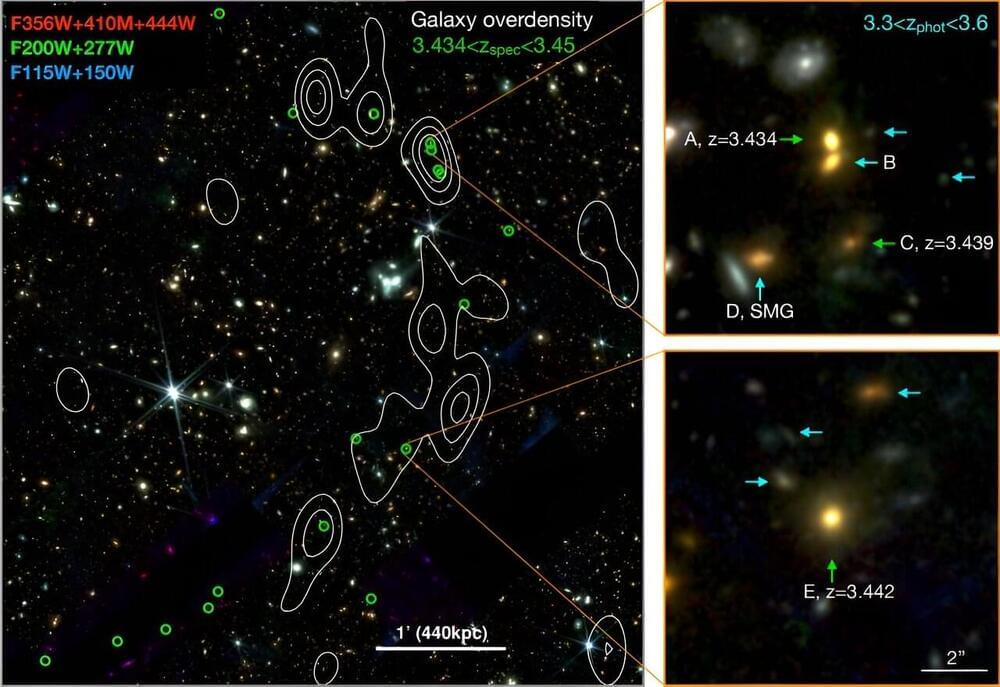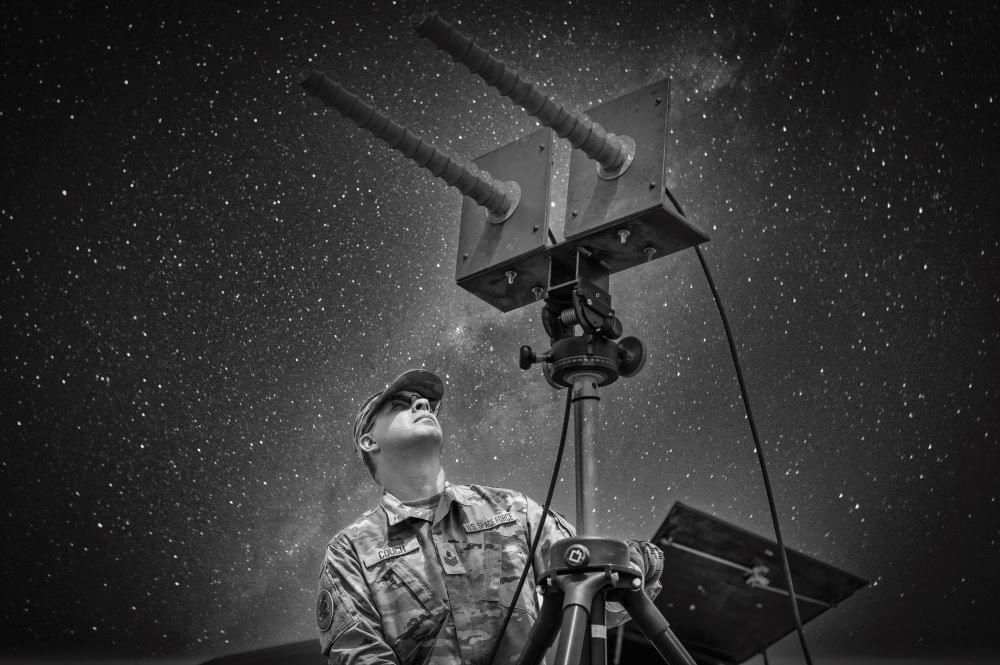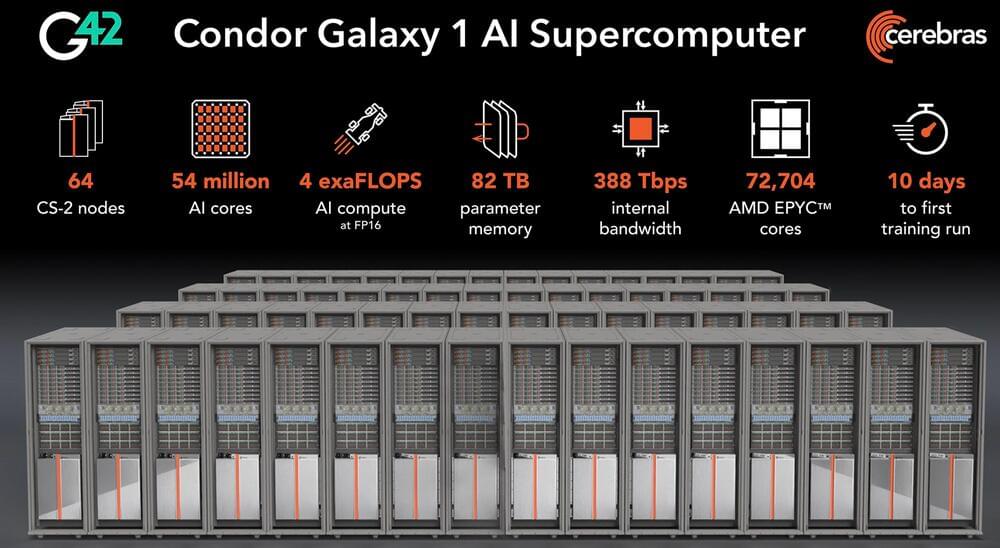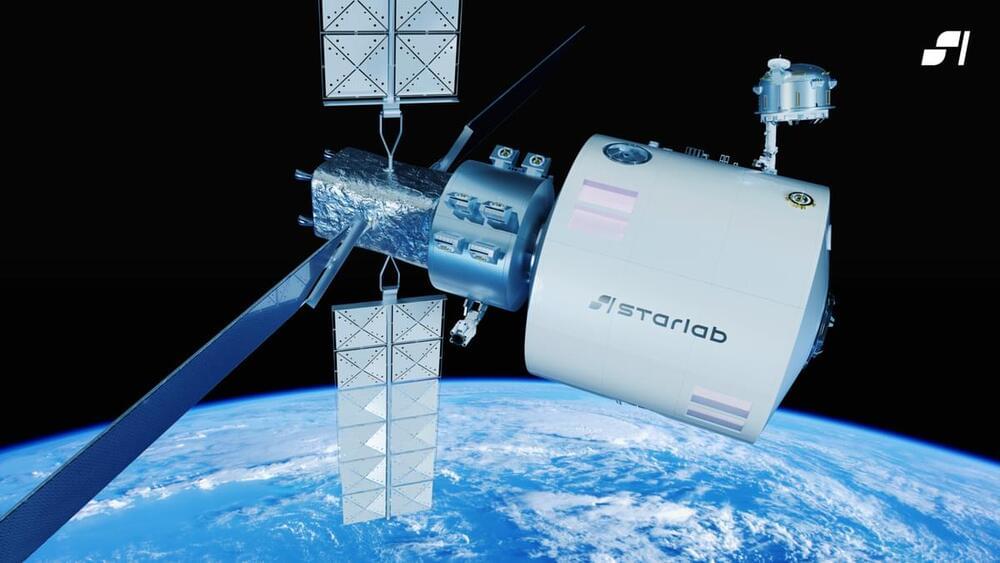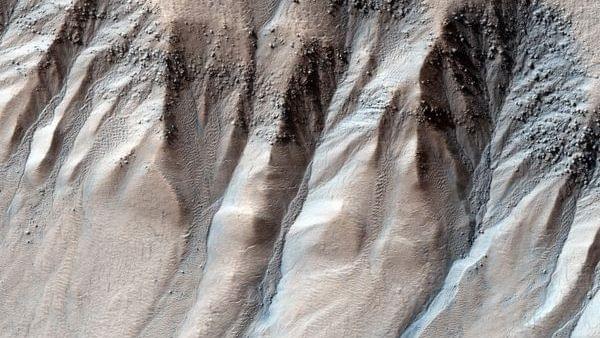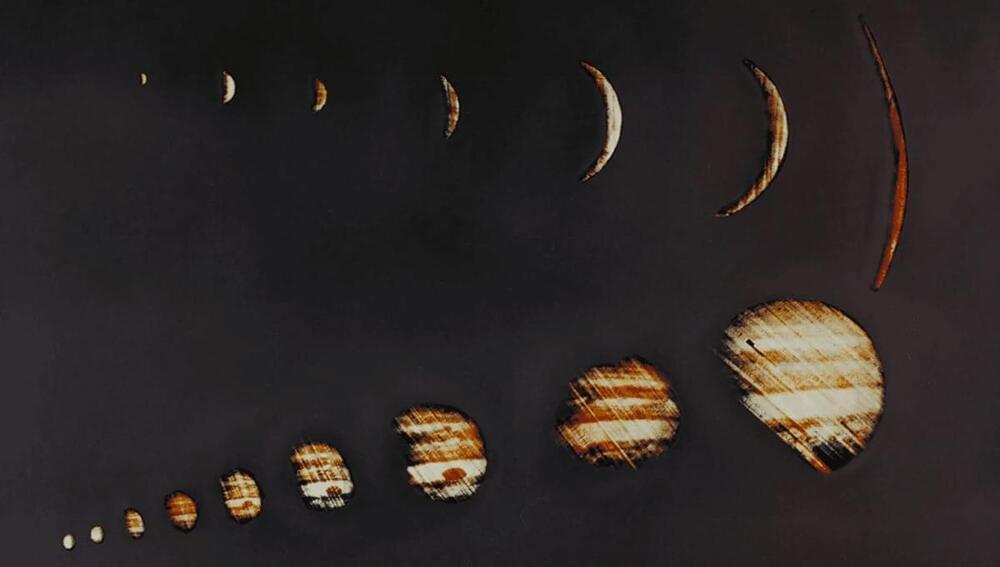Nov 15, 2023
The ‘Cosmic Vine’: Astronomers discover a large structure that hosts at least 20 massive galaxies
Posted by Genevieve Klien in categories: evolution, space
An international team of astronomers reports the discovery of a large-scale structure that consists of at least 20 massive galaxies. The structure, dubbed “Cosmic Vine,” has a size of about 13 million physical light years. The finding was detailed in a paper published Nov. 8 on the pre-print server arXiv.
Massive and dense structures of galaxies are perceived as progenitors of galaxy clusters—the most massive gravitationally-bound systems in the universe. Therefore, detecting new structures of this type and investigating them in detail is fundamental for our understanding of galaxy formation and evolution.
Now, a group of astronomers led by Shuowen Jin of the Technical University of Denmark, has detected a new object of this type—a large vine-like structure, hence its name Cosmic Vine. The structure was revealed at a redshift of 3.44, in the Extended Groth Strip (EGS) field observed with JWST. The observations were complemented by data from the Hubble Space Telescope (HST).
